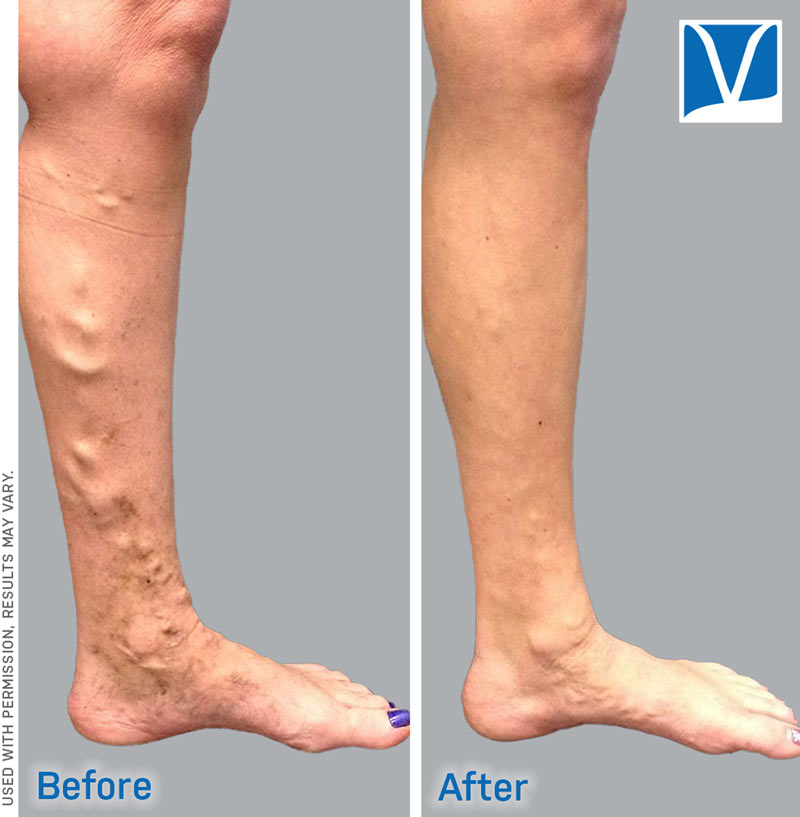Varicose veins develop when blood doesn’t sufficiently move through veins but instead, pools in them. The condition is most common in the lower legs, down around the ankles and calves, and it’s more common in older adults and women. Here’s a look at how the condition progresses and how it’s treated.
Common Symptoms of Varicose Veins
Varicose veins go through several stages as the condition progresses, but the condition is already fairly well developed by the time you notice even the first symptom.
To start with, you may notice skin discoloration or other changes to the skin in the affected area. The skin can turn red or brown, and it might look like a rash, be visibly shiny or appear scaly. These signs can appear where the veins are most affected, and the skin discoloration will spread as the condition worsens.

As varicose veins progress, they can become bulgy, knotted and the veins themselves can become more visible. Their appearance can be unsightly, and it can have significant effects on what people wear, what activities they partake in and their overall quality of life.
Progression can also lead to itching and hair loss where the skin changes. Sores and pain can also develop.
Why Your Legs Might Have Skin Discoloration
The skin discoloration that varicose veins cause develops from blood pooling in and leaving the veins. Veins that pool with blood can be visible even though they’re below the surface of the skin, as the dark-colored blood will show through thin layers of skin. The red and brown skin discoloration stems from excess blood that pools in the veins and pressurized fluid that leaks into the surrounding tissue. Both red and brown are signs of ongoing inflammation leading to damage of the skin. Red is more acute, and brown is more chronic.
Can You Prevent or Cure Varicose Veins?
Prevention and treatment for varicose veins can be helpful. The risk factors contributing to varicose veins can be reduced if you:
- Move briskly for about 10 minutes every hour
- Exercise regularly
- Wear non-constricting clothes
What Are the Treatment Options for Varicose Veins
Should you develop varicose veins that require treatment, there are multiple treatments available. You can view our varicose vein treatment options – meanwhile, elevating your feet and wearing compression stockings also helps. In many cases, the effect of varicose veins can be greatly reduced through proper care.
Post-Procedure Care for Varicose Veins
Your vein physician can discuss exactly how to care for yourself after a varicose vein procedure. In general, you can expect to:
- Stay active and walk leisurely
- Avoid intense aerobic activity for one week
- Wear compression stockings during the day for a few days
- Sleep with compression stockings the first night
- Avoid direct sunlight for one week
- Manage pain and itching with an ice pack or acetaminophen
Finding Varicose Vein Treatment
If you are interested in learning more about varicose veins treatment options, simply fill out our Online Appointment Request Form or call any of our clinics in Northwest Portland , Tigard, Happy Valley, Hillsboro or Bend, Oregon.
